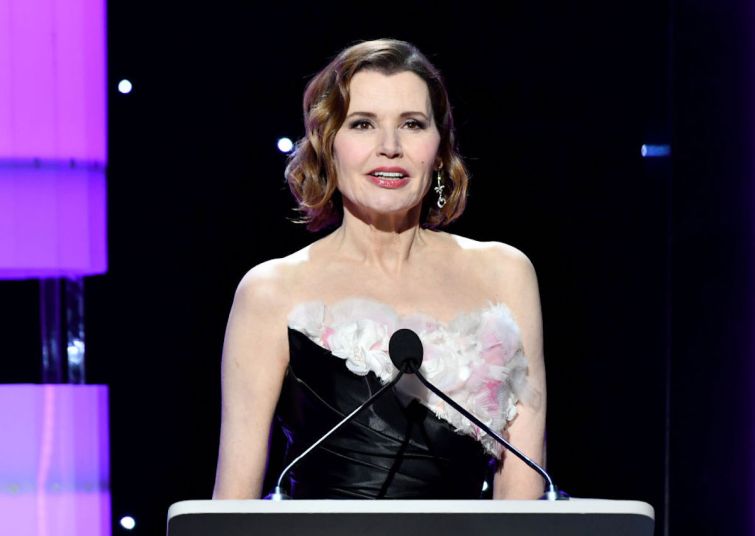How Geena Davis Helped to Make Hollywood More Inclusive
The actress has done important work behind the scenes.

Geena Davis has been acting for decades, and it’s likely you already recognize her from films like Thelma & Louise and A League of Their Own. But Davis is more than just an actress. In 2004, she founded the Geena Davis Institute on Gender in Media, a nonprofit organization dedicated to giving women and their stories an equal chance in Hollywood. According to its mission statement, it’s the only global research organization within the entertainment industry “working to create gender balance, foster inclusion and reduce negative stereotyping in family entertainment media.”
At tonight’s Emmy Awards, the Institute will receive an honorary award for this work. With the tagline “If she can see it, she can be it,” the Institute’s advocacy for greater inclusion in Hollywood started long before representation became a hot button topic. “There’s one space where parity can be reached virtually overnight: on screen,” she said, and the Institute has been working tirelessly toward this goal for years.
Davis’ mission addresses ageism as well; specifically, the lack of roles for women over 50. In 2021, the Institute released a comprehensive study, “Women Over 50: The Right to Be Seen Onscreen,” that consisted of surveys and research highlighting the near total absence of mature women in Hollywood movies. Key findings included:
- “Among characters 50+, men are far more common on screen than women.
- “[Of] all 50+ characters, men are 4 out of 5 in film, 3 out of 4 in broadcast television, and 2 out of 3 in streaming television.
- “Younger characters are far more likely to have a romantic storyline than characters 50+.
- “Depending on the year [of the film’s release], characters 49 and under are two to three times as likely to have a romantic storyline than characters 50+.”
The study also recommended Hollywood find new was to portray older characters onscreen, and reduce its dependence on cliché depictions like “the sage,” “the cranky old person,” and “the old maid.” Presenting older characters this way flattens life experiences and causes younger people to have negative views on aging.
The Institute’s research explores how disability and different body types are represented, as well. It recently found that:
- While 18.7% of Americans have a physical or cognitive disability, they represented only around 1% of the leads in family films.
- Though the CDC reports that 40% of American adults have larger body types, just 8.3% of movie characters have larger body types.
By using careful research and precise data, the Institute highlights gaps in representation, and creates a path for the entertainment industry to become more inviting to all viewers.
Davis’ personal devotion to this cause fuels the Institute. She was inspired to create it while watching TV with her daughter and noticing how few girls and women appeared onscreen. As a longtime actress, Davis also understands the importance of age-based representation. In an interview, she noted that her career slowed down dramatically “once there was a four in front of my age.” With her Institute, Davis works to ensure that today’s young actresses won’t experience the same discrimination. In recent years, conversations around improving the entertainment industry have increased substantially, and it’s been inspiring to see Davis and her Institute making progress toward greater accessibility in movies and TV. You can watch her receive her award tonight at the Emmy’s on ABC.
















